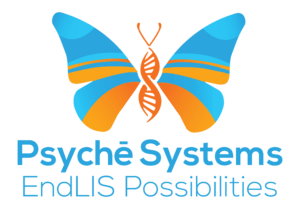Next-gen sequencing isn’t exactly new. Some laboratories have used it since the mid-90s, and many other labs got on board in the early 2000s. It’s no wonder next-gen sequencing options have generated so much interest. After all, it has a lot of uses in cancer diagnostics, virology, and genetics. Plus, labs can gain efficiency by adding next-gen options into the mix.
Still, next-gen sequencing is newer than Sanger sequencing, so a lot of startup labs haven’t made the switch yet. That’s changing quickly, though. So, if you run a startup laboratory, how can you get involved in next-gen sequencing? Here are some things that can help you start the process.
Acquire Next-Gen Sequencing Tools
Obviously, your laboratory tools should align with the type of sequencing that you want to perform. You may or may not already have the lab equipment you need for next-gen workflows. Now would be a great time to take a look at your lab inventory to see if it needs any upgrades.
If you do need new equipment, you’ll want to make sure that you find the right equipment for a startup lab budget. By now, you already know that brand-new lab equipment can get expensive fast. The good news is that you don’t necessarily need brand-new lab equipment. Again, next-gen sequencing has existed for a while now, so you can find like-new equipment or refurbished equipment at decent prices. Take a look at some auctions, refurbishers, and resellers to get started.
Find Affordable Next-Gen Sequencing Software

Next, you’ll need software that can handle next-gen processes. If your current software doesn’t handle next-gen options, then you don’t necessarily have to go over budget when you make the switch. You can find affordable next-gen software as long as you know where to look.
One way to get started is to look for reviews that mention affordability. Reviews can point you in the right direction. Another option is to look for lab software companies that market toward startup labs. These software companies generally offer more affordable options than those that only market toward well-established labs.
You can also find affordable software by looking for customization options. With customization, you can make sure that you only get the features that you need and don’t have to pay for anything extra.
However, make sure that you don’t sacrifice quality in the name of saving money. These days, there’s no reason why you should settle for one or the other. With today’s technology, you can absolutely have both. It may take a little extra digging to find the right software, but once you find that perfect balance, you’ll be glad that you made the effort. You want low upfront costs, but you also need cost-effectiveness, and that means finding a software that can last for a long time.
Include Next-Gen Sequencing in Your Marketing
Once you add next-gen sequencing to your lab service menu, make sure that your clients and your future clients know about it. You can do several things with your marketing at this point. If you take care of your own marketing, make sure that you keep up with the latest news in next-gen testing. This way, you can let your clients know how your lab’s work fits into the grand scheme of scientific discovery.
Set up a marketing campaign to appeal to hospitals, medical centers, and similar clients who understand the importance of next-gen sequencing. If you offer any direct-to-consumer services, you can still emphasize your laboratory changes. However, with these campaigns, avoid laboratory jargon, and explain the value of next-gen testing in an accessible way.
Stay Organized
It’s not easy to make a major laboratory change. It’s worth it, yes, but it’s not easy. To smooth the transition and make these changes as simple as possible, it’s vital that you keep your laboratory organized.
When it comes to organization, there’s no right or wrong setup. The right system is the one that works best with your laboratory. However, a lot of the best organization tips come back to having the right software. When your software is well-organized, the rest will follow. For example, you might choose a software with barcode scanning capabilities. This way, you can transfer information fast and stay organized in the process.
You can also keep your lab organized with a reporting lockout feature. If your lab software has this kind of feature, it will lock users out of a report whenever someone else makes updates to that report. This way, users can avoid dealing with overlapping information, and you can keep that information organized while saving time in the process.
For optimum organization, consistency is key. No matter which organizational processes you use, make sure that you keep them consistent, especially as you implement your new next-gen sequencing options.
Give Your Laboratory Time to Adjust
Finally, when you add next-gen sequencing to your startup lab, make sure that you give your laboratory time to adjust. Have patience with your laboratory, your techs, and yourself as you make these new adjustments. Any laboratory change can be difficult, especially changes that add new features to startup labs. However, those changes will be worth the time and effort.
NucleoLIS from Psychē Medical Laboratory Software
Again, when you add next-gen sequencing to your laboratory mix, a lot of your success will depend on having the right laboratory software. That software should be affordable, startup-friendly, and able to handle a full range of molecular disciplines, including next-gen sequencing options.
That’s why so many startup laboratories use NucleoLIS software from Psychē Medical Laboratory Software. NucleoLIS is a cost-effective solution that handles molecular lab disciplines. It fits all of the above criteria for an excellent LIS.
Contact us today with your questions, or start customizing your own LIS. Major lab changes can take time, but we can help your lab with the adjustment.

